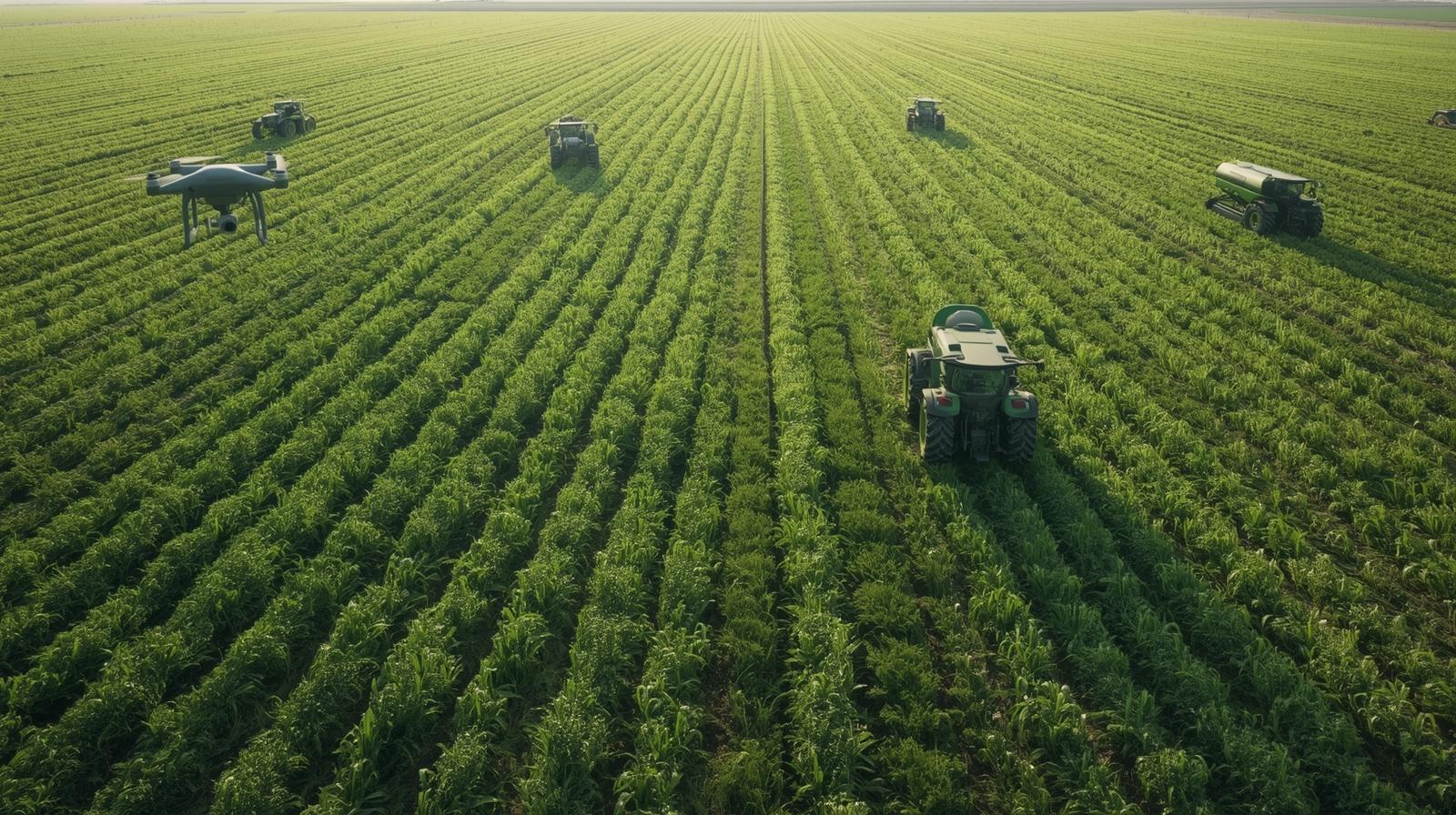The global agricultural landscape is undergoing a remarkable transformation, driven by the adoption of digital and data-driven technologies. Precision farming, also known as precision agriculture or smart farming, represents this shift towards technology-enabled agricultural practices that aim to optimize field-level management with respect to crop farming. By leveraging advanced tools such as GPS, IoT sensors, drones, data analytics, and artificial intelligence, precision farming helps farmers make informed decisions, increase productivity, reduce operational costs, and promote sustainable farming practices.
Download PDF Brochure @ https://www.marketsandmarkets.com/pdfdownloadNew.asp?id=1243

Understanding Precision Farming
Precision farming is an integrated approach that uses cutting-edge technologies to monitor, measure, and respond to inter- and intra-field variability in crops. The core principle revolves around managing variations in fields to ensure that crops and soil receive exactly what they need for optimum health and productivity. Farmers can use digital maps, satellite imagery, and real-time data analytics to track soil conditions, weather patterns, and crop health, thereby enabling targeted actions such as irrigation, fertilization, and pest control.
The goal of precision farming is to maximize yield while minimizing resource wastage. Unlike traditional farming, which applies uniform inputs across large tracts of land, precision agriculture focuses on site-specific management. Through automation and data-driven insights, farmers can precisely apply fertilizers, pesticides, and water where and when they are needed most, improving efficiency and environmental outcomes.
Market Growth and Dynamics
The precision farming market has experienced significant growth in recent years, driven by the increasing demand for higher agricultural productivity and the rising global population. The need to produce more food with limited resources has prompted farmers and agribusinesses to adopt smart farming technologies. According to industry analyses, the global precision farming market is projected to grow substantially over the next decade, supported by advancements in IoT, remote sensing, and machine learning technologies.
Government initiatives promoting sustainable agricultural practices and technological adoption have also accelerated market growth. Subsidies and training programs for digital farming tools, particularly in emerging economies, are enabling farmers to adopt precision agriculture practices more readily. Furthermore, private sector investments and partnerships among agritech companies, equipment manufacturers, and data analytics providers are fostering innovation in the sector.
Key Technologies Driving Precision Farming
The growth of precision farming is closely linked to technological innovation. GPS technology enables accurate field mapping and equipment guidance systems, ensuring precise planting, fertilizing, and harvesting. IoT sensors collect real-time data on soil moisture, nutrient levels, and environmental conditions, allowing farmers to make timely decisions. Drones and satellite imagery are used for crop monitoring, helping detect diseases, nutrient deficiencies, or irrigation issues early on.
Artificial intelligence and machine learning play a critical role in analyzing vast amounts of data gathered from farms. Predictive analytics and decision support systems help farmers forecast yields, manage risks, and optimize resource allocation. Additionally, variable rate technology (VRT) allows for the automated adjustment of input applications based on field conditions, leading to cost savings and improved crop performance.
Regional Insights
North America currently dominates the precision farming market, attributed to the early adoption of advanced agricultural technologies and strong support from government initiatives. The region’s large-scale farms, high investment capacity, and developed infrastructure have made it a leader in smart farming innovation. Europe follows closely, driven by policies encouraging sustainable agriculture and environmental stewardship.
The Asia Pacific region is expected to witness the fastest growth during the forecast period. Countries such as India, China, and Japan are increasingly investing in digital agriculture to enhance food security and resource efficiency. Rapid urbanization, limited arable land, and growing food demand are pushing farmers in these regions to adopt precision technologies to increase yield and profitability.
Challenges and Opportunities
Despite the promising growth, the precision farming market faces several challenges. High initial investment costs, lack of technical expertise, and limited access to reliable internet connectivity in rural areas are some of the major barriers to adoption. Small and medium-scale farmers often find it difficult to justify the upfront costs of precision farming equipment and software solutions.
However, the increasing availability of affordable sensors, mobile-based applications, and cloud computing solutions is expected to bridge this gap. The ongoing digital transformation of agriculture presents immense opportunities for both technology providers and farmers. As data-driven decision-making becomes more mainstream, precision farming will play a pivotal role in ensuring food security while promoting sustainable agricultural practices.
Future Outlook
The future of precision farming lies in the seamless integration of technologies across the agricultural value chain. The convergence of AI, robotics, blockchain, and IoT is expected to further revolutionize farming operations. Automation in tractors and harvesting machines, along with predictive analytics, will help reduce labor costs and enhance efficiency.
As climate change continues to impact global agriculture, precision farming technologies will become increasingly vital in mitigating risks and improving resilience. With continuous innovation, growing investments, and supportive policies, precision farming is poised to redefine the future of agriculture — making it smarter, more sustainable, and more productive than ever before.
